Ethanoate - Study guides, Class notes & Summaries
Looking for the best study guides, study notes and summaries about Ethanoate? On this page you'll find 83 study documents about Ethanoate.
Page 3 out of 83 results
Sort by

-
Unit 4B: Making Nail Vanish Remover
- Exam (elaborations) • 6 pages • 2023
-
- $7.99
- + learn more
Unit 4B: Making Nail Vanish Remover Introduction In the manufacture of ethyl ethanoate, there are a few techniques used, one of them being reflux. The principle behind using reflux is that it boils the reactants without losing any product or reactant, especially through vapour or gas. In the reaction there is a round bottom flask containing the reactants and a condenser with a water inlet and output. Due to organic chemicals being inherently unstable, when heated they will evaporate, res...
![AQA A-level CHEMISTRY 7405/3 Paper 3 Version: 1.0 Final *JUN237405301* IB/M/Jun23/E9 7405/3// QUESTION PAPER & MARKING SCHEME/ [MERGED] Marl( scheme June 2023](/docpics/4481881/65c9e95676417_4481881_121_171.jpeg)
-
AQA A-level CHEMISTRY 7405/3 Paper 3 Version: 1.0 Final *JUN237405301* IB/M/Jun23/E9 7405/3// QUESTION PAPER & MARKING SCHEME/ [MERGED] Marl( scheme June 2023
- Exam (elaborations) • 62 pages • 2024
-
- $8.99
- + learn more
AQA A-level CHEMISTRY 7405/3 Paper 3 Version: 1.0 Final *JUN* IB/M/Jun23/E9 7405/3 For Examiner’s Use Question Mark 1 2 3 4 5 6 Section B TOTAL Friday 23 June 2023 Morning Time allowed: 2 hours Materials For this paper you must have: • the Periodic Table/Data Booklet, provided as an insert (enclosed) • a ruler with millimetre measurements • a scientific calculator, which you are expected to use where appropriate. Instructions • Use black ink or black ball-poin...

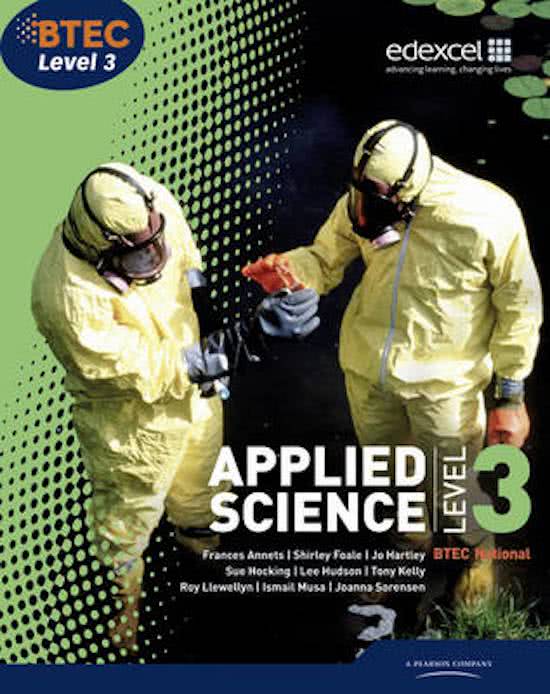
-
Essay Unit 4B : Making a nail varnish remover BTEC Level 3 National Applied Science Student Book, ISBN: 9781846906800
- Essay • 15 pages • 2023
-
- $9.75
- 1x sold
- + learn more
An organic ester compound, ethyl ethanoate, of acetic acid with ethyl alcohol, it is a colourless solution which is highly volatile, best known in glues and nail polish remover. This chemical is one of the simplest carboxylate esters with the widest range of uses. This compound liquid has a characteristically sweet, pleasant fruity odour. The chemical used for this experiment must be handled with extreme caution as they are highly corrosive and flammable. So, it is important to wear the right th...

-
CHEM 120 Week 5 Virtual Lab; Organic Chemistry
- Other • 15 pages • 2023
- Available in package deal
-
- $20.99
- + learn more
OL Lab 9: Building models of organic compounds Learning Objectives: • Build virtual models to learn about the structure of organic compounds • Draw extended structural formulas of organic compounds Compounds that are based on the carbon atom are known as organic compounds. These compounds commonly contain, nitrogen, oxygen, and hydrogen in addition to carbon. Carbon forms a variety of covalent compounds with varied properties. Carbon containing compounds are formed by sharing electrons, c...
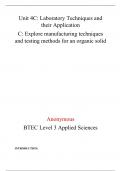
-
Unit 4C: Explore manufacturing techniques and testing methods for an organic solid
- Essay • 12 pages • 2024
- Available in package deal
-
- $9.57
- + learn more
Aspirin is a generic term for acetylsalicylic acid. This substance was first introduced in the late 1890s, that has become a ‘’non-steroidal anti-inflammatory drug’’, non-opioid analgesic and antiplatelet drug which is widely used for medicinal purposes. Aspirin will not react against the acetic conditions of the stomach, yet it is hydrolysed in the intestines as it will react on alkaline conditions to create ethanoate ions and salicylate. Aim: In this practical, an Aspirin will be made...
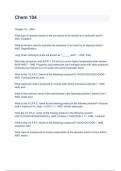
-
Chem 104 Questions And Verified Answers
- Exam (elaborations) • 7 pages • 2023
- Available in package deal
-
- $7.99
- + learn more
Chem 104 Questions And Verified Answers Chapter 14 - ANS What type of reaction results in the conversion of an alcohol to a carboxylic acid? - ANS Oxidation What is the term used to describe the hydrolysis of an ester by an aqueous base? - ANS Saponification Long Chain carboxylic acids are known as "______ acid". - ANS Fatty Why does propanoic acid (M.W. = 74) boil at a much higher temperature than hexane (M.W.=86)? - ANS Propanioc acid molecules can hydrogen bond with ...
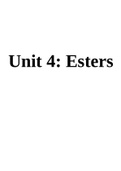
-
Unit 4: Esters
- Exam (elaborations) • 6 pages • 2023
-
- $15.49
- + learn more
Unit 4: Esters. How can you make simple esters? Heating a mixture of ethanoic acid and ethanol with a few drops of concentrated sulfuric acid produces ethyl ethanoate Ethanoic acid + ethanol -> ethyl ethanoate + water CH3COOH + CH3CH2OH -> CH3COOCH2CH3 + H2O Starting materials: ethanol and ethanoic acid Catalyst: concentrated sulfuric acid Conditions: heat The concentrated sulfuric acid isn't written into the equation because it is a catalyst and therefore isn't consumed in th...

-
Unit 14 Assignment D
- Other • 21 pages • 2023
- Available in package deal
-
- $14.28
- + learn more
This assignment contains three experiments: -chlorination of 2-methylpropan-2-ol -nitration of methyl benzoate - preparation of an ester (ethyl ethanoate) they contain conclusions and evaluation
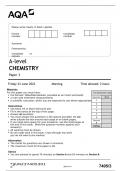
-
A-level CHEMISTRY Paper 3
- Exam (elaborations) • 41 pages • 2023
- Available in package deal
-
- $8.49
- + learn more
A-level CHEMISTRY Paper 3 Friday 23 June 2023 Morning Time allowed: 2 hours Materials For this paper you must have: • the Periodic Table/Data Booklet, provided as an insert (enclosed) • a ruler with millimetre measurements • a scientific calculator, which you are expected to use where appropriate. Instructions • Use black ink or black ball-point pen. • Fill in the boxes at the top of this page. • Answer all questions. • You must answer the questions in the spaces p...
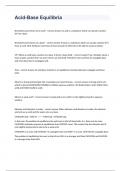
-
Acid-Base Equilibria question n answers rated A+ 2023/2024
- Exam (elaborations) • 18 pages • 2023
- Available in package deal
-
- $17.99
- + learn more
Acid-Base Equilibria Bronsted-Lowry theory of an acid? - correct answer An acid is a substance which can donate a proton (H+) to a base. Bronsted-Lowry theory of a base? - correct answer A base is a substance which can accept a proton (H+) from an acid. (N.B. All bases must have at least one pair of electrons to be able to accept a proton. T/F: When an acid loses a proton to a base, it forms a base itself. - correct answer True. Similarly, when a base accepts a proton from an acid, it for...

Study stress? For sellers on Stuvia, these are actually golden times. KA-CHING! Earn from your study resources too and start uploading now. Discover all about earning on Stuvia


